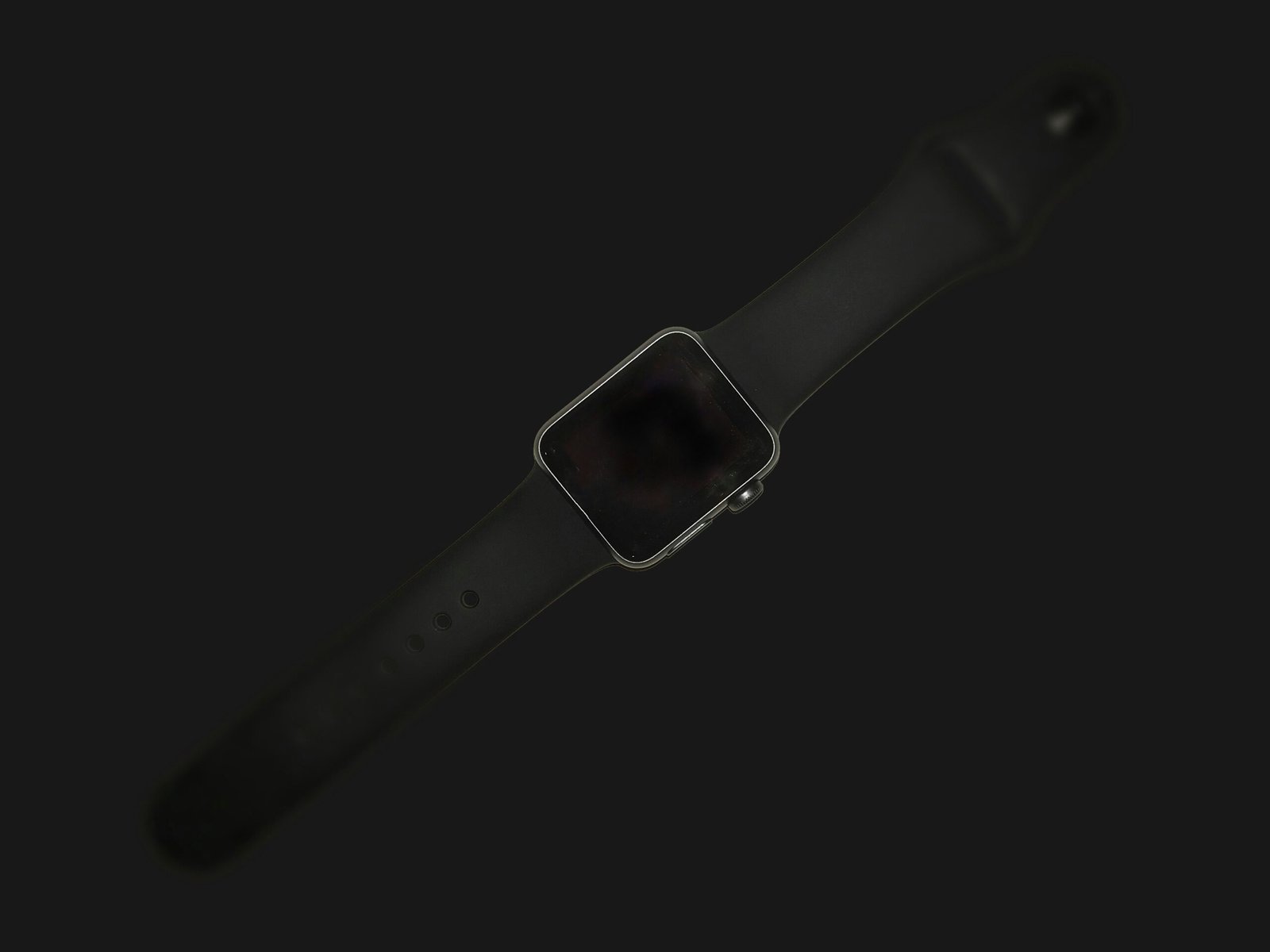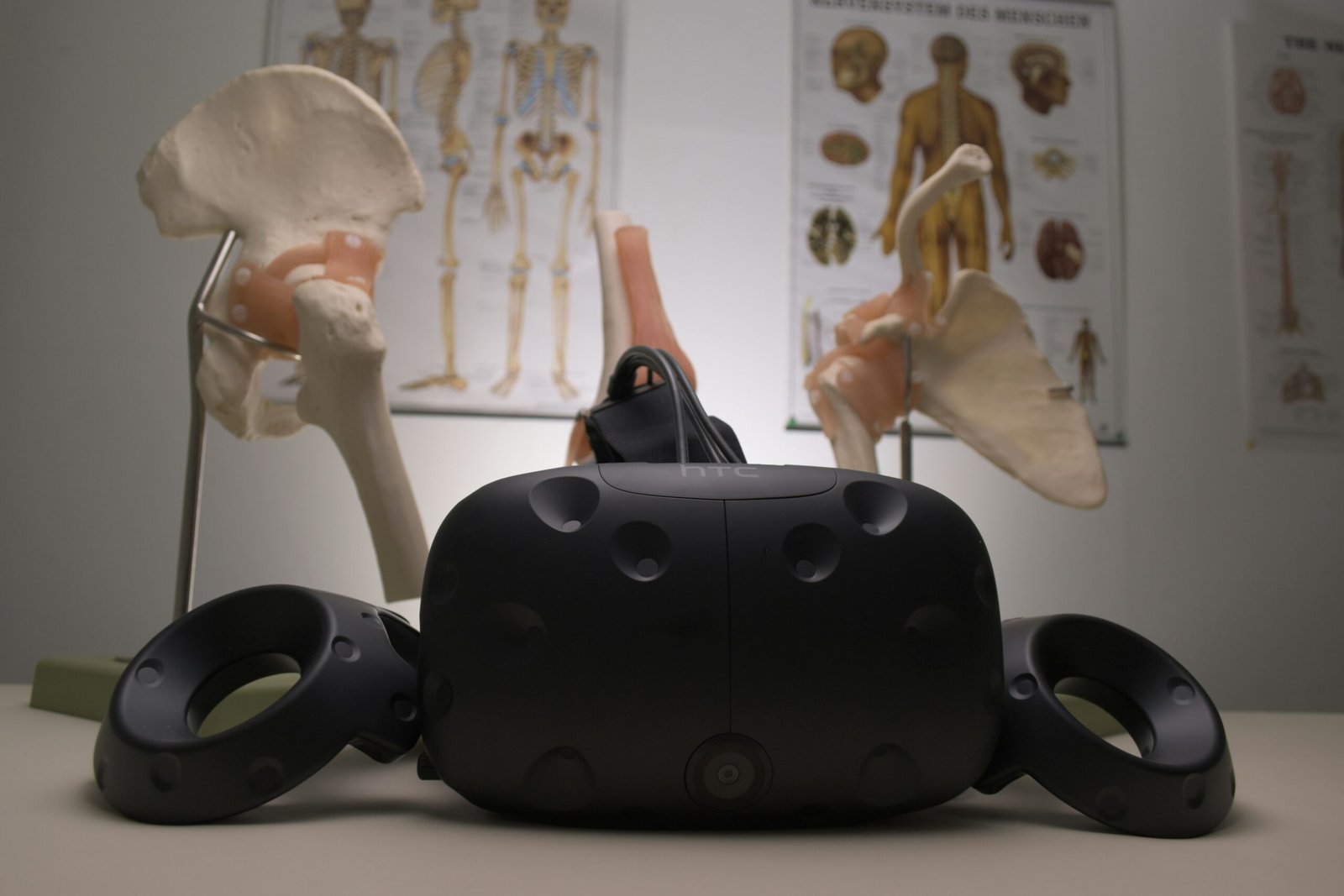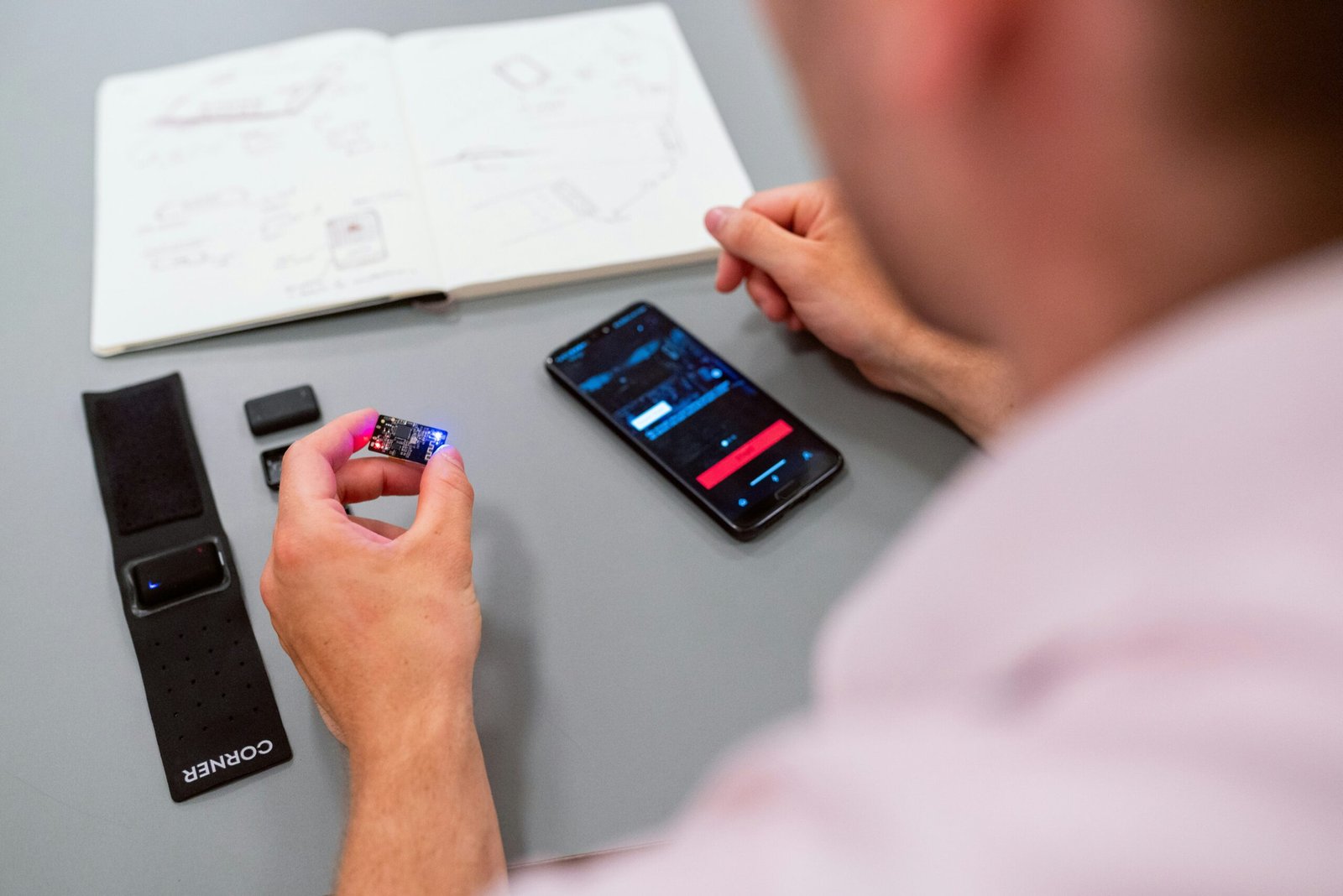The Wearable Tech Revolution: Will Your Next Device Monitor Your Emotions?
 Photo by Arthur Guiot on Unsplash
Photo by Arthur Guiot on Unsplash Introduction to Wearable Technology
Wearable technology has seen exponential growth in recent years, transitioning from rudimentary fitness bands to sophisticated gadgets capable of monitoring a wide range of biometric data. Initially, these devices primarily focused on tracking physical activities, such as steps taken, calories burned, and heart rate. However, advancements in technology have paved the way for more complex functionalities, evolving the concept of wearables beyond mere fitness tracking.
Today, wearable technology encompasses a variety of devices, including smartwatches, health monitors, and even smart clothing. With integrated sensors and algorithms, these devices are now capable of capturing detailed information related to the user’s health and well-being. For instance, many smartwatches can track not only physical activities but also monitor sleep patterns, stress levels, and even blood oxygen saturation. As such, the data collected can help users make informed decisions about their lifestyle and health.
A burgeoning area of interest within the wearable tech landscape is the ability to monitor emotional well-being. Converging disciplines such as psychology and biometric science have advanced to a point where detecting emotional states through physiological indicators is indeed feasible. Sensors that measure heart rate variability, skin temperature changes, and even electrodermal activity can provide insights into a person’s emotional health. This growing interest reflects an increased awareness of emotional health and its impact on overall wellness.
The advancements in wearable technology raise intriguing questions about the future of emotion-tracking capabilities. As devices become more sophisticated, the potential applications of monitoring emotions could radically alter our understanding of mental health and emotional intelligence. The following sections will delve deeper into these aspects, exploring the implications of such technology on daily life and personal well-being.
The Science of Emotion Detection
Emotions are complex psychological states accompanied by physical responses, making them a focal point of research in both psychology and neuroscience. Understanding how emotions manifest physically is essential for developing wearable technology capable of monitoring these states. Emotions can influence physiological indicators such as heart rate, skin conductance, and facial expressions. For instance, a spike in heart rate often correlates with feelings of anxiety or excitement, while variations in skin conductance may indicate levels of arousal related to emotional responses.
Biometric measurements are instrumental in assessing emotional states. Heart rate variability (HRV) has gained traction as a metric that reflects emotional regulation and stress levels. A higher HRV is often associated with a well-regulated emotional state, whereas a lower HRV may indicate emotional distress. Additionally, skin conductance, which measures the electrical conductance of the skin, serves as another valuable physiological indicator. It has been shown that sweating increases as individuals experience heightened emotional states, such as fear or joy, making skin conductance a reliable measure for emotion detection.
Recent advancements in neuroscience further support the association between physiological responses and emotional states. Studies utilizing functional magnetic resonance imaging (fMRI) have illustrated how certain brain activities align with specific emotions, establishing a biological basis for emotional expression. Simultaneously, research in the field of psychophysiology has demonstrated that emotional experiences have quantifiable physical components, urging developers of wearable technology to consider these findings in their designs.
By integrating psychological insights and physiological data, emotion detection in wearable technology promises to enhance our understanding of personal emotional states. This fusion could lead to more tailored emotional wellbeing strategies, ultimately paving the way for a new era of personalized health management through wearable devices.
Current Wearable Technologies and Their Capabilities
The landscape of wearable technology has rapidly evolved, introducing devices that not only monitor physical health but also delve into the realm of emotional well-being. Among the most prevalent types of wearable devices, smartwatches and specialized health trackers have integrated advanced features designed to track and analyze emotional states. These capabilities are increasingly crucial for users seeking to enhance their mental health alongside their physical fitness.
Smartwatches, such as the Apple Watch and Fitbit models, have incorporated features that allow for the monitoring of stress levels and mood fluctuations. These devices utilize sensors to measure physiological responses such as heart rate variability (HRV) and skin conductance, which are indicative of emotional states. For example, elevated heart rates may indicate stress or anxiety, while a consistent HRV can signify calmness and relaxation. Users can access insights through accompanying mobile applications, providing a comprehensive overview of their emotional wellness over time.
In addition to smartwatches, specialized health trackers, like the Moodbeam or the Emotiv Insight, are designed exclusively for emotional monitoring. The Moodbeam, for instance, uses a simple button interface to log moods throughout the day, allowing users to reflect on how their emotional states correlate with various activities or life events. Meanwhile, the Emotiv Insight employs EEG technology to assess brain activity and provide feedback on emotional states, giving users an innovative tool to understand their mental health better.
Furthermore, biofeedback devices, such as the Muse meditation headband, offer users feedback on their mental state during mindfulness practices. By tracking brain activity, these devices guide users toward improved emotional regulation techniques, emphasizing the connection between physiological responses and mental health. These advancements in wearable technology highlight the potential of integrating emotional monitoring for a holistic approach to overall wellness.
Potential Benefits of Emotion Monitoring Devices
The advent of emotion monitoring devices represents a significant advancement in the realm of wearable technology. These devices provide users with the ability to track their emotional states in real-time, offering a multitude of potential benefits for mental health management, interpersonal relationships, and self-awareness. By analyzing physiological data such as heart rate variability and skin conductance, users can gain valuable insights into their emotional conditions and responses.
One of the most compelling advantages of these wearables is their capacity to enhance mental health management. Users can leverage the data gathered from these devices to identify patterns that correlate with their emotional fluctuations. For instance, individuals struggling with anxiety or depression can benefit from this self-tracking feature. By consistently monitoring their emotions, users can recognize triggers and develop effective coping strategies, potentially alleviating symptoms. Moreover, mental health professionals can utilize this data to tailor therapeutic interventions, leading to more personalized and effective treatment plans.
In addition to fostering emotional awareness, these devices can significantly improve personal relationships. By encouraging users to understand their emotional responses, they can communicate more effectively with their partners, friends, and family. Enhanced emotional intelligence is a cornerstone of healthy relationships, enabling individuals to respond empathetically to the emotions of others and fostering a supportive environment.
Furthermore, the ability to monitor and reflect upon one’s feelings can cultivate a greater sense of self-awareness. As users become more attuned to their emotional states, they can initiate positive lifestyle changes and stress mitigation techniques tailored to their specific needs. Mindfulness practices, journaling, or engaging in physical activities can be incorporated into daily routines, leading to improved overall well-being. The potential benefits of emotion monitoring devices are vast, paving the way for a new era of emotional health management.
Ethical Considerations and Privacy Concerns
The integration of emotional data monitoring within wearable technology raises significant ethical implications that warrant careful consideration. As these devices collect sensitive information about an individual’s emotional state, privacy concerns become paramount. Users must be adequately informed about what data is being collected, how it is used, and who may have access to it. Establishing clear consent protocols is essential to empower users in their decision-making processes regarding the sharing of their emotional data.
Data security is another critical aspect to address. As emotional data can be particularly sensitive, inadequate security measures could expose users to breaches that compromise their personal information. Companies must prioritize the development of robust security infrastructures to shield user data from potential cyber threats. Furthermore, ensuring that emotional data is anonymized and aggregated can help mitigate risks associated with individual identification, supporting both privacy and ethical transparency.
Moreover, the potential for misuse of emotional data poses ethical dilemmas that cannot be overlooked. The manipulation of data for target advertising, persuasive marketing, or any malicious intent can lead to significant trust erosion between users and technology providers. Therefore, it is vital to implement responsible design practices that prioritize user welfare. Collaborative engagement with ethicists, technologists, and user representatives can help inform the creation of guidelines that support the ethical deployment of emotional-monitoring devices.
To achieve a balance between innovation and ethical responsibility, adopting comprehensive policies is crucial. These policies should not only protect user information but also promote emotional well-being. Research and discussions around best practices can pave the way for a framework that ensures wearables enhance user experiences without compromising personal rights. The wearable technology sector must remain vigilant in addressing these ethical considerations to foster user trust and ensure a sustainable market.
Challenges in Emotion Monitoring Technology
The evolution of wearable technology aimed at emotion monitoring presents various technical and practical challenges that developers must navigate to create effective and reliable devices. One significant difficulty lies in ensuring the accuracy of measurements. Current emotion-monitoring technologies often rely on physiological indicators such as heart rate variability, skin conductance, and temperature. However, these physiological responses can be influenced by numerous factors, including physical activity, environmental conditions, and individual health status. As a result, accurately interpreting these signals to determine a person’s emotional state remains a complex undertaking.
Another obstacle arises from the individual differences in emotional expression. People exhibit emotions in diverse ways, shaped by cultural backgrounds, personal experiences, and psychological factors. Therefore, a one-size-fits-all approach may not be effective for emotion recognition. Developers increasingly recognize the need for adaptive algorithms that can account for these variations in emotional expression to improve the reliability of emotion-monitoring wearables.
Moreover, the variability of physiological responses is a significant challenge that complicates emotion monitoring. Individuals may react differently to the same stimulus, leading to inconsistency in reading and interpreting emotional states. This variability necessitates extensive calibration and personalization in the technology design, which can be time-consuming and costly. Furthermore, it raises concerns about the generalizability of findings across different populations and settings.
Lastly, the current technological limitations within the wearables industry hinder the advancement of emotion-monitoring devices. Many existing products face constraints related to battery life, sensor sensitivity, and data processing capabilities. The integration of advanced machine learning algorithms and artificial intelligence is still in its infancy, resulting in a gap that must be bridged to allow for real-time and highly accurate emotion detection. Addressing these challenges will be crucial for the evolution of emotion monitoring in wearable technology.
Future Trends in Wearable Tech and Emotion Monitoring
As the digital landscape evolves, wearable technology is increasingly making strides in the realm of emotional monitoring. This integration presents a paradigm shift in how individuals can understand and manage their emotional well-being. The incorporation of artificial intelligence (AI) stands out as a key trend, enabling devices to analyze data patterns significantly more efficiently than previous technologies. By utilizing AI algorithms, wearable devices can not only track physiological responses but also interpret emotional states in real-time, offering users insights into their moods and stress levels.
Moreover, machine learning algorithms are poised to enhance the personalization aspect of emotional monitoring. These sophisticated algorithms learn from individual user data, thereby tailoring feedback to complement specific emotional needs. For instance, a wearable device may suggest relaxation techniques or mindfulness exercises when it detects heightened stress indicators, ultimately promoting emotional health and resilience. This targeted approach could foster greater engagement with the technology, as users find real value in customized feedback that caters to their unique emotional profiles.
Furthermore, the potential for wearables to integrate seamlessly with mental health services is a developing trend set to transform emotional wellness tools. Imagine a scenario where your wearable tech not only tracks emotional health but also connects with mental health professionals for real-time evaluations. This connectivity can pave the way for timely interventions, bridging gaps in traditional health services while providing a more holistic view of an individual’s mental and emotional state.
As these advancements unfold, consumers can anticipate a wave of wearable devices equipped with enhanced emotional monitoring capabilities. The future looks promising, as the amalgamation of technology, personal health, and emotional intelligence continues to reshape the landscape of wearables.
Consumer Perception and Acceptance
As the wearable technology market expands, the concept of devices capable of monitoring emotions is becoming increasingly prominent. To understand the consumer perception and acceptance of these innovative gadgets, various surveys and reports indicate a nuanced landscape. While there is a noteworthy interest in emotion-tracking wearables, potential users express ambivalence regarding their actual implementation.
Studies have revealed that many consumers are intrigued by the prospect of wearables that provide insights into their emotional states. Approximately 60% of surveyed individuals indicated they would consider using such a device if it could enhance their mental well-being or aid in emotional regulation. The appeal is significantly influenced by the growing awareness surrounding mental health; however, several consumers exhibit reluctance due to privacy concerns and the sensitive nature of emotional data. The level of comfort with the technology plays a vital role in its acceptance.
Practicality remains another major consideration affecting consumer attitudes. Many potential users find themselves questioning the tangible benefits these devices would offer in their everyday lives. Factors such as device design and usability are crucial in swaying public sentiment. Wearables that feature sleek appearances and user-friendly interfaces are perceived more favorably, as they integrate seamlessly into existing lifestyles. Furthermore, additional features—such as stress management tools or social connectivity—could enhance their attractiveness, addressing both functionality and emotional engagement.
In essence, the acceptance of wearable tech designed to monitor emotions hinges on how manufacturers can effectively address consumer worries about privacy and practicality. By focusing on robust design, usability, and appealing extra features, the industry can better position these devices to fit into the daily lives of users, facilitating a smoother transition into this emotional dimension of technology.
Conclusion: The Future of Emotional Awareness Through Wearables
The evolution of wearable technology has witnessed a remarkable trajectory, with innovations increasingly shifting toward monitoring emotional well-being. We have explored various aspects of this growing field, considering the implications and potential benefits of devices designed to gauge emotional states. The integration of physiological data, such as heart rate variability and skin temperature, with advanced algorithms marks a significant development in understanding human emotions.
As these wearables become more prevalent, their impact on personal health and wellness cannot be overstated. Individuals will have the unprecedented ability to track their emotional responses in real-time, leading to a better understanding of mental health patterns and triggering proactive measures for emotional balance. This data-driven approach can enhance self-awareness, fostering a culture of mindfulness and promoting healthier coping mechanisms for stress and anxiety.
Moreover, the influence of these devices extends into interpersonal relationships, offering opportunities for improved communication. By sharing emotional insights gleaned from wearables, individuals may nurture greater empathy and understanding among peers, family, and colleagues. Such transparency could transform social interactions, allowing for deeper connections, and potentially ushering in a more emotionally intelligent society.
However, the journey towards widespread adoption of emotion-monitoring wearables must navigate a landscape of ethical considerations. Privacy concerns, data security, and the potential for misuse of emotional data raise questions that must be addressed. Striking a balance between technological advancements and ethical accountability will be imperative as developers push the boundaries of what these devices can achieve.
In conclusion, the future of wearables dedicated to emotional awareness holds significant promise. With ongoing research and ethical frameworks in place, we stand at the cusp of a revolution in how we perceive and manage emotions, emphasizing the importance of holistic health in an increasingly digital world.




Tidak ada komentar